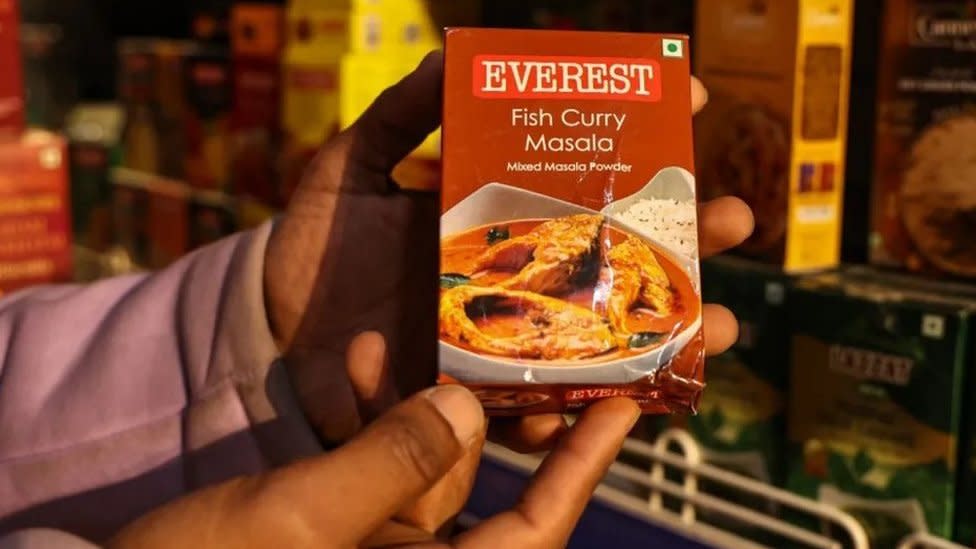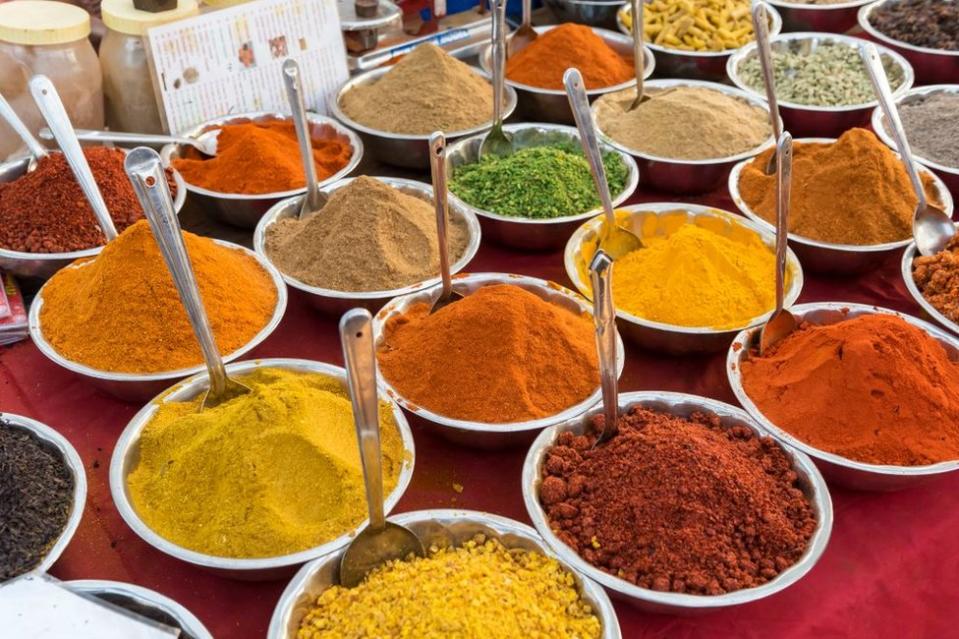MDH and Everest: Indian spices face heat over global safety concerns

"For Indians, spices are like paints in a paint box", says Indian actor-turned-food writer Madhur Jaffrey. "We get different shades from the same spice by doing something to the spice."
In other words, you can roast the spices or grind them into powders. The diversity of their flavours is mind-boggling. Indian spices enhance pickles and season meat. They flavour savouries and street food. Zesty spices energise local fruit drinks and add a tangy twist to fruits and salads.
Unsurprisingly, India has emerged as a global spice powerhouse. It exports more than 200 spices and value-added products to some 180 countries, worth $4bn (£3.1bn), according to the Spices Board of India. The domestic market alone is worth a staggering $10bn, making it the world's largest consumer of spices.
But now, concerns are emerging regarding the safety of these renowned spices. Last month, Singapore and Hong Kong halted sales of some spices produced by Indian companies MDH and Everest over suspected elevated levels of ethylene oxide, a cancer-causing pesticide.
That's not all. The US Food and Drug Administration (FDA) is also investigating products from the two popular brands for potentially containing the pesticide, an FDA spokesperson told Reuters. An analysis done by the news agency of the US regulatory data found that since 2021, an average of 14.5% of US shipments of MDH spices were rejected due to presence of bacteria. Both brands insist that their products are safe.
The European Union (EU) has raised concerns of its own, discovering the same cancer-causing substance in samples of chilli peppers and peppercorns from India. Reports say that the Maldives, Bangladesh and Australian food regulators have also launched investigations.

India: Global spice powerhouse
India exports nearly $4bn worth of spices, accounting for 12% of global spice exports
Major spices exported include chilli powder, cumin, turmeric, cardamom and mixed spice
Other notable exports include asafoetida, saffron, anise, nutmeg, clove and cinnamon
China, the US and Bangladesh are the biggest markets for Indian spices
Other significant markets include the UAE, Thailand, Malaysia, Indonesia, the UK, Australia, Singapore and Hong Kong
(Source: Spices Board, Global Trade Research Initiative)
Clearly, it is a disturbing development. For one, both the brands are popular and trusted ones. Delhi-based MDH, an iconic 105-year-old family-run firm, offers a range of more than 60 blended and ground spices. The 57-year-old Everest Food Products, launched by a spice trader, claims to be India's "largest manufacturer of pure and blended spices", exporting to over 80 countries. Amitabh Bachchan and Shah Rukh Khan, Bollywood superstars, have served as Everest's brand ambassadors.
To be sure, this is not the first time Indian spices have been found to be contaminated. In 2014, Ipsita Mazumdar, a biochemistry expert, tested popular spice brands in Kolkata which made chilli, cumin, curry powder, and garam masala. She found lead in the food colouring used to give the spices vibrant orange or red hues. And more recently in April, food and drugs control authorities in Gujarat seized more than 60,000kg of adulterated spices - chilli powder, turmeric and coriander power and pickle masala.

So are Indian spices safe? The federal government has instructed all state governments to conduct quality tests. The Spices Board - which has five quality evaluation labs - has issued guidelines to exporters to check for use of ethylene oxide. The Food Safety and Standards Authority of India (FSSAI) is also testing samples.
India's health ministry claims the country has one of the world's strictest Maximum Residue Limits (MRLs) standards, with pesticides' MRLs varying by food commodity and determined through rigorous risk assessments. But something is clearly amiss: in 2022, the FDA highlighted inadequate sanitary facilities, accommodation, and equipment cleanliness standards at a premier Indian spice plant.
"India has been a spice exporter for centuries. But this image has been declining in the last few years, with the government's inadequate attention. We do not yet know at which stage the contamination is happening. Ethylene oxide is not used by farmers. It is most probably a post-harvest, post-processing residue," says Narasimha Reddy Donthi, an independent researcher and environmental justice activist.
"It is not only the negative attention. Repeated cases of excessive residues can have a long-term effect. In the past, mango exports to the US suffered for years due to pesticide residues," Mr Reddy adds.
Delhi-based think tank Global Trade Research Initiative (GTRI) believes the recent quality concerns could threaten half of India's spice exports due to "cascading regulatory actions in many countries".
If China questions the quality of Indian spices, over half of India's global exports could be affected, joining five other countries, the GTRI said in a recent report. "The situation could worsen if the EU, which regularly rejects Indian spice consignments over quality issues, follows suits."
For spice enthusiasts in the West, the origin of the spices in their food remains unclear.
"I don't think most people are aware of where their spices come from. I certainly don't, and I use spices a lot! I live a few blocks from Chicago's main Indian shopping district, Devon Avenue, which is where I buy my spice. l assume they come from India but have never looked into this," Colleen Taylor Sen, an author specialising in Indian cuisine, told me.
In the end, experts say, India must fundamentally overhaul its approach to food safety, prioritising transparency, stringent enforcement and clear communication to safeguard the integrity of its exports.

